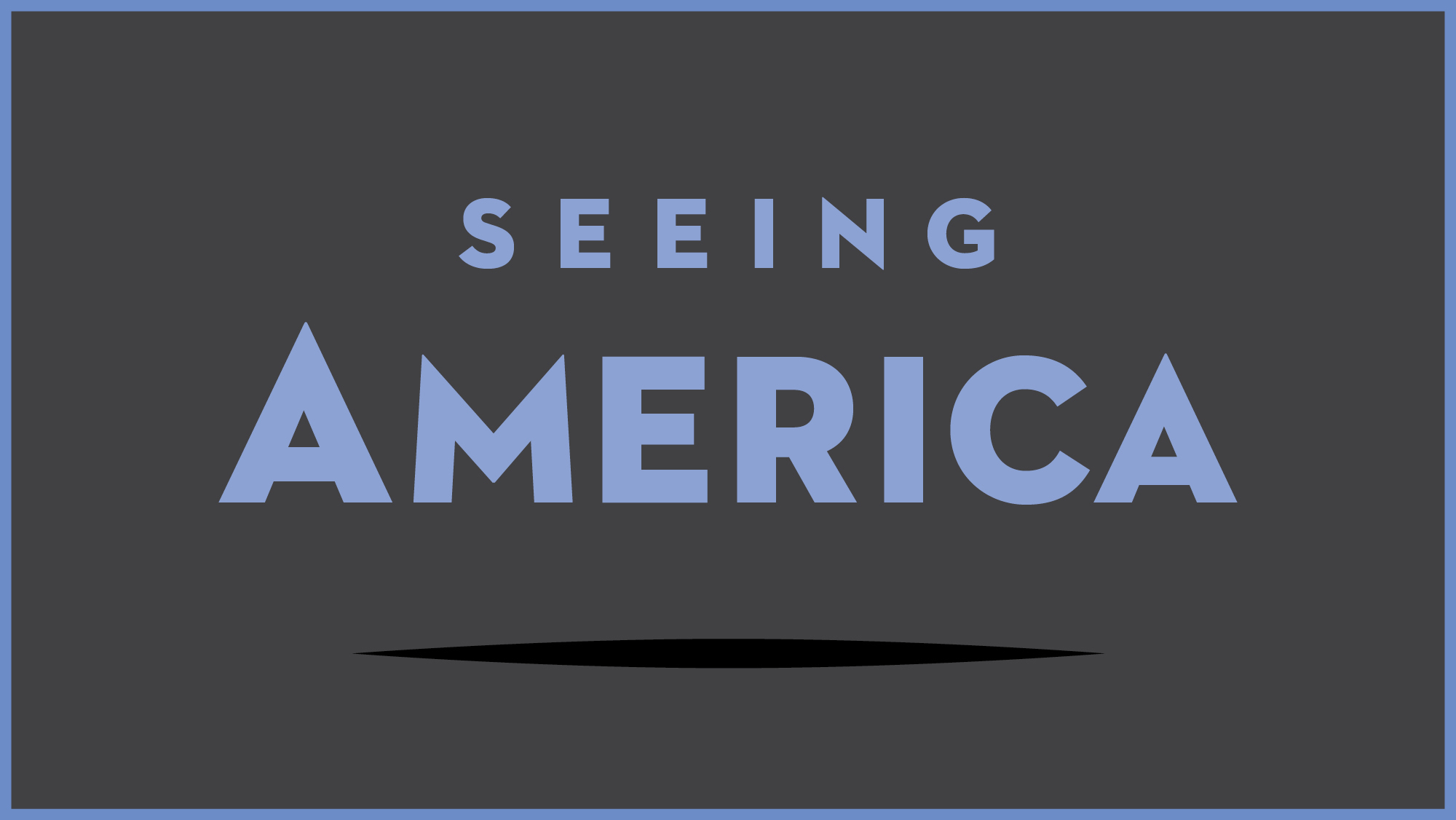Test your knowledge with a quiz
Wood, Parson Weems' Fable
From the artist
“I sincerely hope this painting will help reawaken interest in the cherry tree and other bits of American folklore that are too good to lose. In our present and unsettled times, when democracy is threatened on all sides, the preservation of our folklore is more important than is generally realized….While our own patriotic mythology has been increasingly discredited and abandoned, the dictator nations have been building up their respective mythologies and have succeeded in making patriotism glamorous.”
Grant Wood, “A Statement from Grant Wood Concerning his Painting Parson Weems’ Fable.” Unpaginated transcript dated January 2, 1940 (Amon Carter Museum of American Art curatorial files)
Key points
- Americans watched the rise of fascism in Europe, and to a lesser extent in the United States, in the late 1930s. The founding stories about American democracy became newly relevant in the face of these threats.
- The fable of the cherry tree was first popularized by Parson Weems in 1806 in his biography of George Washington. This story highlighted the virtues of truth-telling and further enhanced Washington’s status as national icon.
- Grant Wood’s theatrical portrayal of this fable is rooted in his work on the stage earlier in his career.
In the years between the wars, Regionalism in the visual arts came to be most directly identified with a widely celebrated triumvirate of painters: Grant Wood, John Steuart Curry, and Thomas Hart Benton. Benton’s self-portrait was on the cover of Time magazine in 1934. Dramatically varied in style, these artists shared a belief that art is most vital when it expresses the particularities of a locality. The Regionalism of Wood, Curry, and Benton also shared with other art forms in these decades between the wars a sense of art’s obligation to shape popular histories, beliefs, and legends. Regionalism was about public memory and collective identity; artists were mythmakers, not only reflecting but also creating a sense of place.
Yet from the 1930s up to the present, the regional themes of Wood, Curry, and Benton have raised suspicions about their conservative social values and rejection of modernism. These suspicions first took shape in the charged international climate of emerging fascism. To some, Regionalism represented a dangerously isolationist, regressive, and anti-modern impulse in art that paralleled the Nazi art of the Third Reich. Regionalism and its foremost apologist, the art critic Thomas Craven, had set its course against European modernism, with its formal distortions and anti-naturalistic interests. Its anti-modern stance linked it to the Nazi propagandizing against the “degenerate art” of the German Expressionists and other modernists.
Was there any validity to these claims that the Regionalists were first cousins to the blindly xenophobic artists who served Hitler’s Reich? The questions are still debated, but the evidence suggests otherwise. All three artists called for an indigenous expression as far removed as possible from the abstractions of blind patriotism. Rejecting provincialism (a narrow attachment to one’s place of birth), all three artists shared a belief that art stemmed from experience, and was most powerful when tied to what the artist himself knew directly. Despite their dismissal of modernism, Wood, Benton, and Curry were all urban-trained artists who had traveled widely, studied the artistic traditions of Europe, and had an understanding of how painting had evolved since Impressionism. (page 490)
In 1939 Hitler invaded Poland, the opening act of World War II. In that year Wood painted Parson Weems’ Fable. A child’s storybook fable of exemplary honesty (George Washington as a child admits his naughty deed to his father), it was popularized by Washington’s most famous biographer, Parson Weems, who stands outside the scene pulling aside a theatrical curtain. The head of the young Washington is that of Gilbert Stuart’s famous painting of the first president as a bewigged old man-an iconic image universally known by its use on the dollar bill. So wide was its circulation that Stuart’s portrait has itself displaced in national memory the historical figure of George Washington as a young boy (or so Wood suggests). In the background of the scene, two slaves are shown picking fruit from a cherry tree, an allusion to the gap between myth and social reality in our national imagination.
Parson Weems’ Fable calls attention to the ways in which our understanding of the past is mediated—literally framed-by representations, by stories within stories, like a series of Chinese boxes. With its toy-like landscape, deliberately naïve presentation, and tale-within-a-tale structure, Parson Weems’ Fable reveals how we construct our national myths, and witnesses the framing power of stories and legends in shaping our collective identity. Unlike the painters of the German Reich, Wood recognized the “folk” as an invented concept, the product not of some essential race identity grounded in the soil, but of stories told and retold, tales whose “authenticity” was itself a product of a nation-state that required unifying myths. Parson Weems’ Fable pointedly exposes the mechanisms of cultural myth rather than presenting them as transparent truths. Among those who collected Wood’s work were a number of Hollywood actors and directors, who, like him, engaged myths with humor and irony. (pages 491-492)
From Angela L. Miller, Janet Catherine Berlo, Bryan J. Wolf, and Jennifer L. Roberts, American Encounters: Art, History, and Cultural Identity (Washington University Libraries, 2018). CC BY-NC-SA 4.0
Go deeper
Learn more about this painting at the Amon Carter Museum of Art
Where can I read Parson Weems’s fable?
Where can I access Parson Weems’s entire biography of Washington?
Learn about the Lansdowne portrait by Gilbert Stuart
More to think about
Wood was associated with American Regionalism, an art movement that focused on the heartland as a symbol of national values and cultural identity. Discuss whether you think Parson Weems’s Fable upholds this idea of wholesome American values or if it offers more critical commentary about the United States in the late 1930s. Which details support your conclusion?
Smarthistory images for teaching and learning:
[flickr_tags user_id=”82032880@N00″ tags=”WoodAmon,”]



